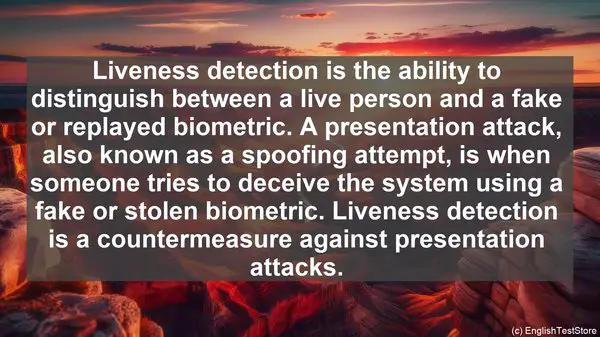Introduction
Welcome to today’s lesson on behavioral biometrics. As students in this field, it’s crucial to have a strong grasp of the terminology. Today, we’ll be focusing on the top 10 words that are frequently misused or misunderstood. Let’s dive in!
1. Authentication vs. Authorization
These two terms are often used interchangeably, but they have distinct meanings. Authentication verifies the user’s identity, while authorization grants access to specific resources or actions. Remember, authentication is about identity, and authorization is about permissions.
2. False Positive vs. False Negative
In behavioral biometrics, we deal with algorithms that make predictions. A false positive occurs when the system wrongly identifies someone, while a false negative happens when it fails to recognize a genuine user. Both are errors, but they have different implications.
3. Accuracy vs. Precision
Accuracy refers to how close a measurement is to the true value, while precision is about the consistency of repeated measurements. In biometrics, we strive for both high accuracy and precision, but they are not the same.
4. Template vs. Raw Data
When it comes to biometric information, we have raw data, which is the original input, and templates, which are mathematical representations derived from the raw data. Templates are used for comparison and matching, while raw data is the source.

5. Enrollment vs. Verification
Enrollment is the process of capturing a user’s biometric data and creating a template. Verification, on the other hand, is the act of comparing a presented biometric sample with the stored template to determine a match. They are distinct steps in the biometric workflow.
6. Continuous vs. Discrete Biometrics
Continuous biometrics, like keystroke dynamics, provide a continuous stream of data over time. Discrete biometrics, such as fingerprint or iris scans, capture a single snapshot. Understanding this difference is crucial when choosing the right biometric modality for a specific application.
7. Liveness Detection vs. Presentation Attack
Liveness detection is the ability to distinguish between a live person and a fake or replayed biometric. A presentation attack, also known as a spoofing attempt, is when someone tries to deceive the system using a fake or stolen biometric. Liveness detection is a countermeasure against presentation attacks.

8. Unimodal vs. Multimodal Biometrics
Unimodal biometrics rely on a single modality, like face or voice. Multimodal biometrics combine multiple modalities for enhanced accuracy and security. Each has its advantages, and the choice depends on the specific requirements of the application.
9. Equal Error Rate (EER)
EER is a common metric used to evaluate the performance of a biometric system. It represents the point where the false acceptance rate (FAR) and false rejection rate (FRR) are equal. A lower EER indicates a more accurate system.
10. Privacy vs. Security
While both are important in biometrics, they have different focuses. Privacy is about protecting an individual’s personal information, while security is about safeguarding the system and its data. Striking the right balance between the two is crucial.

